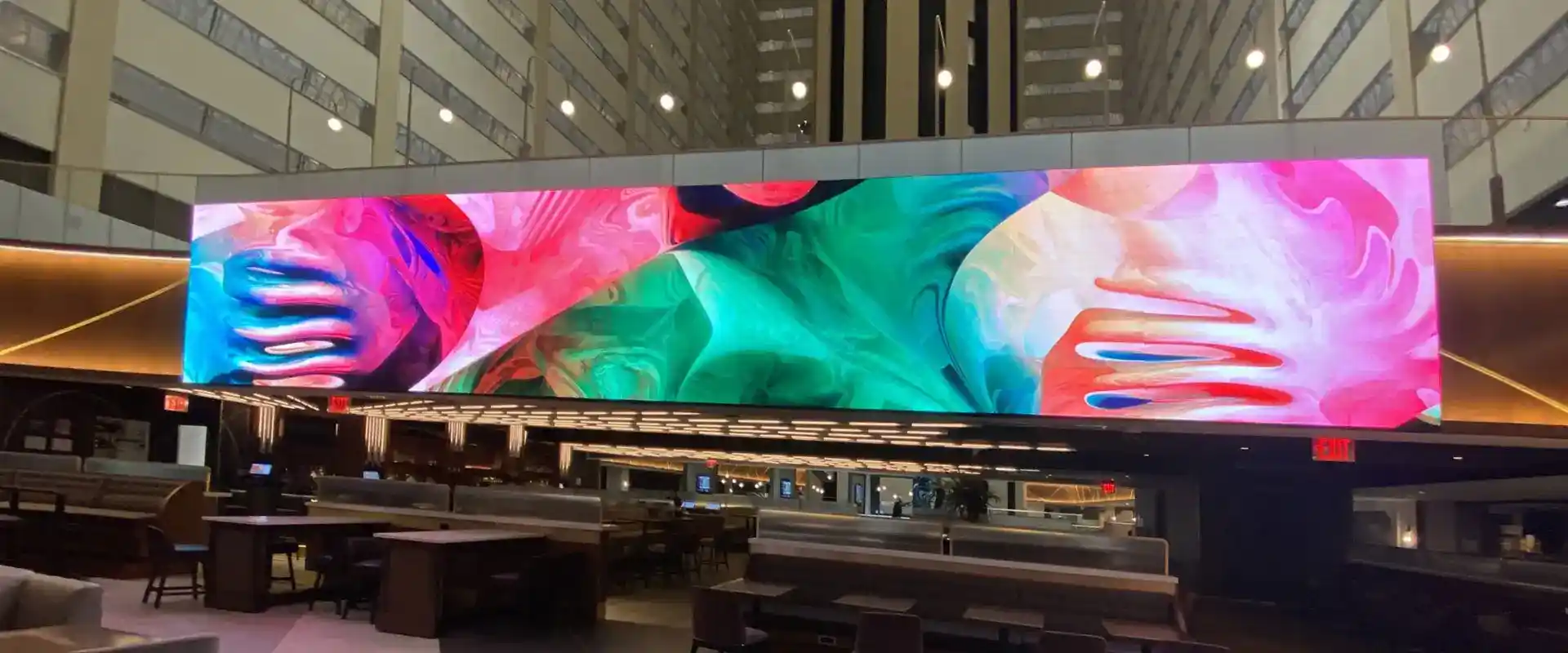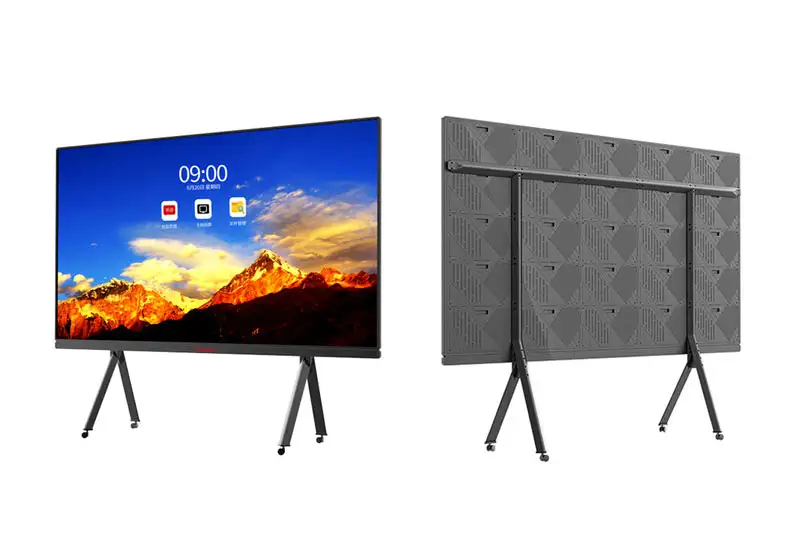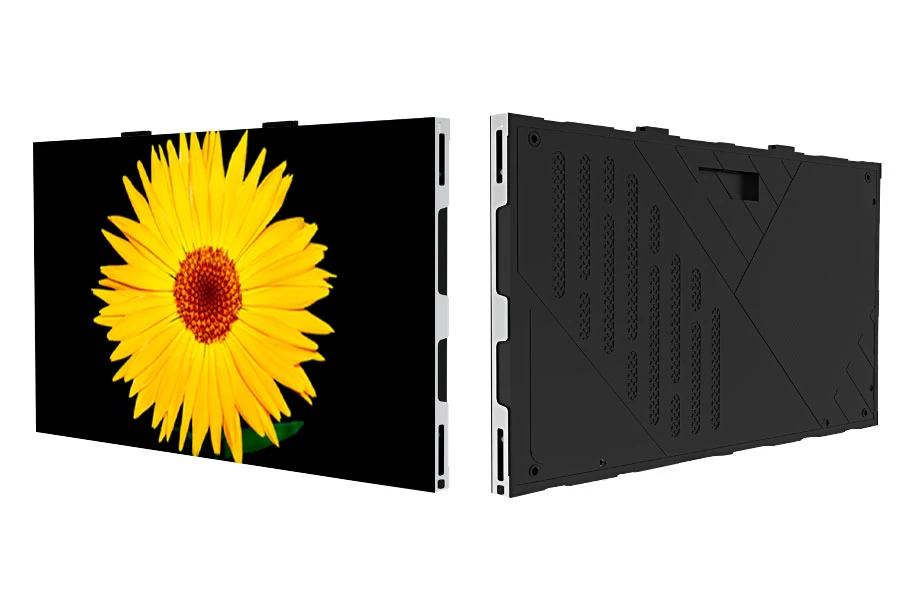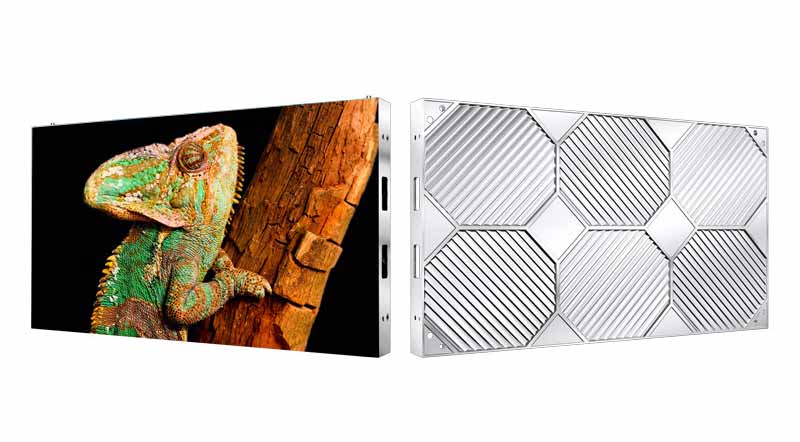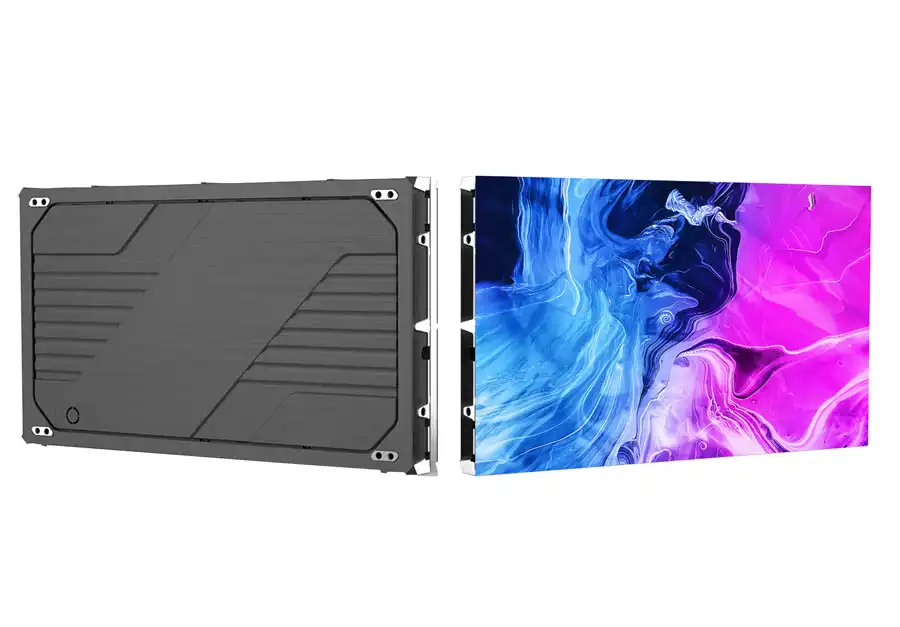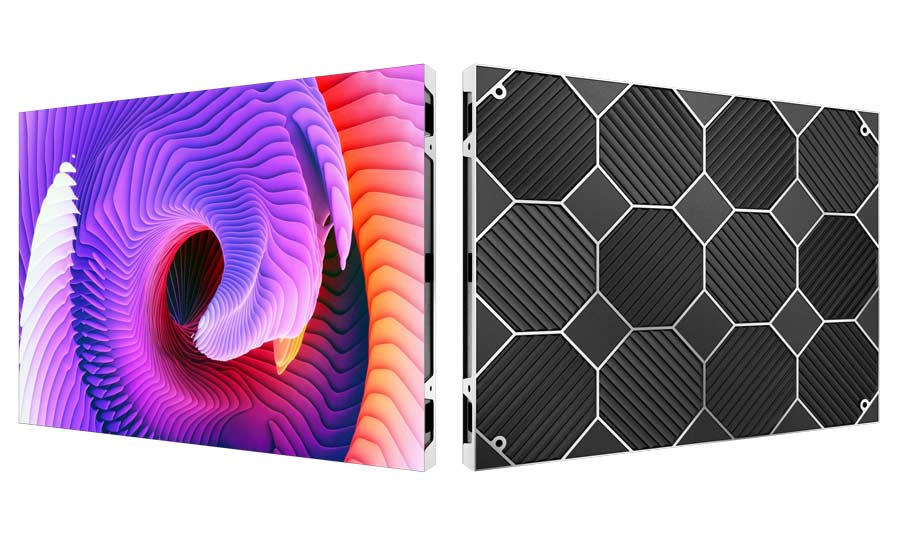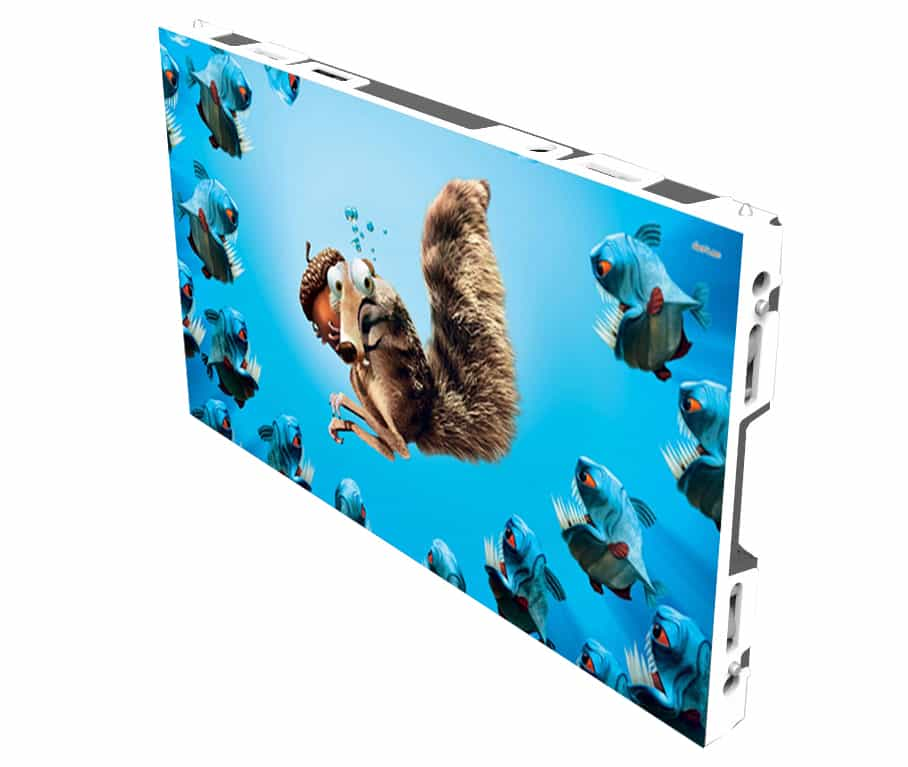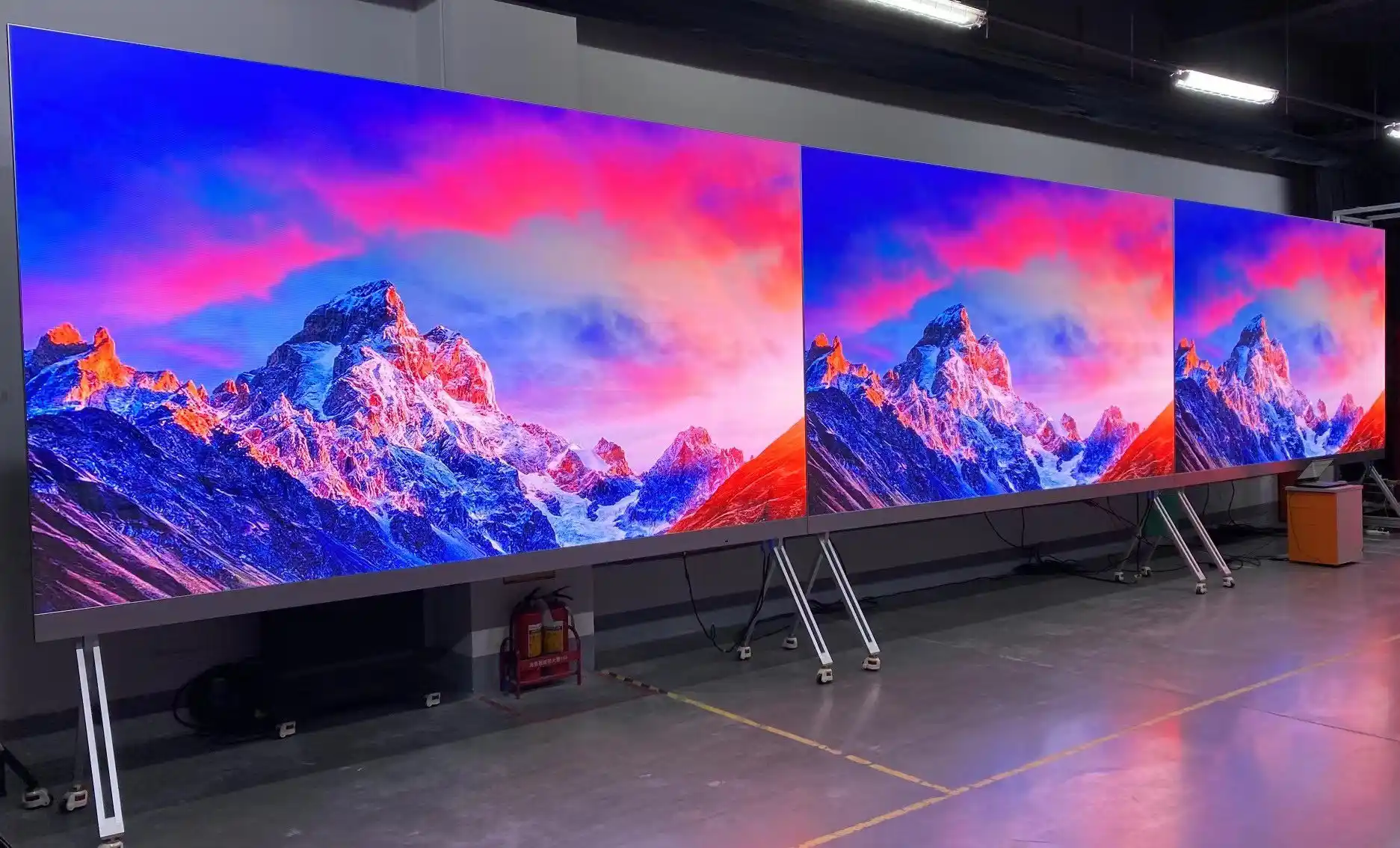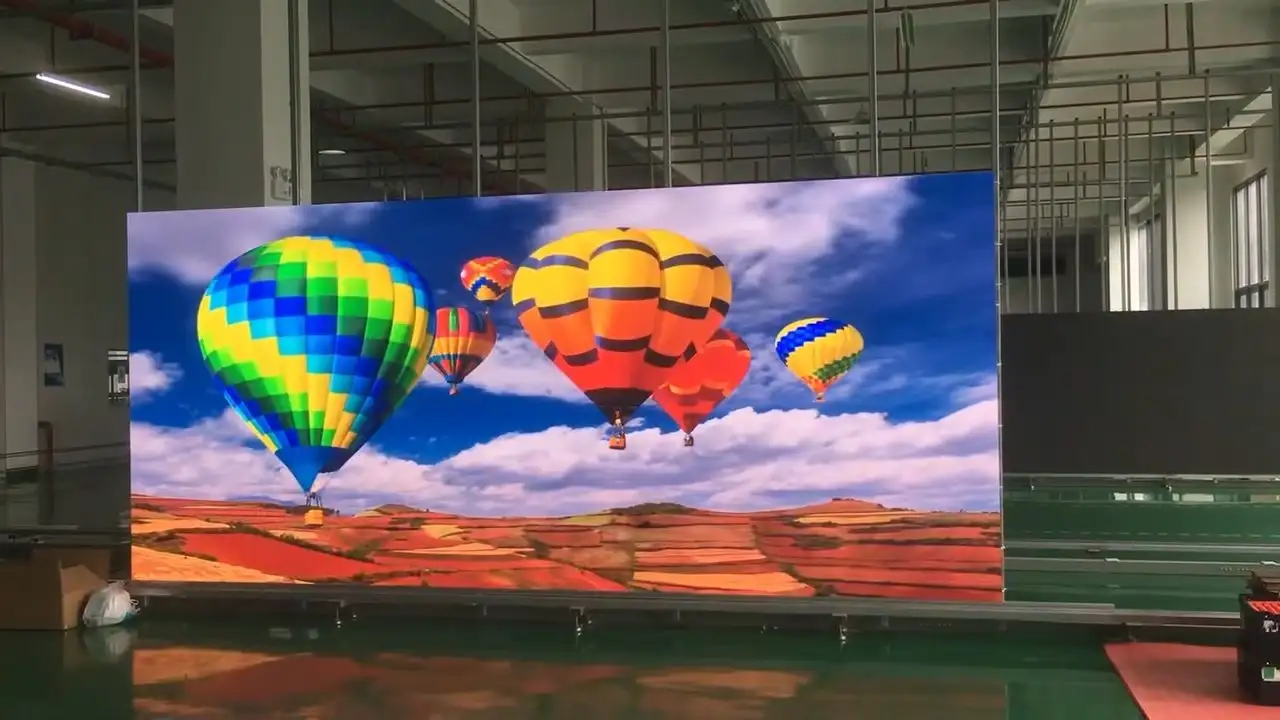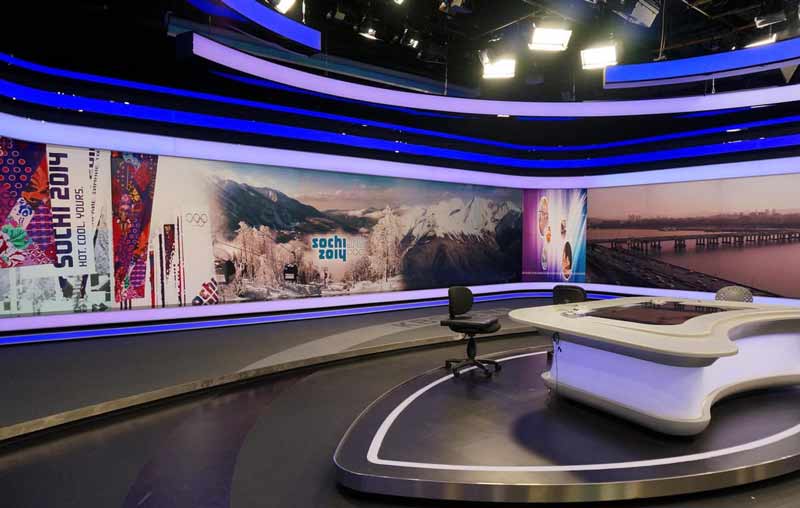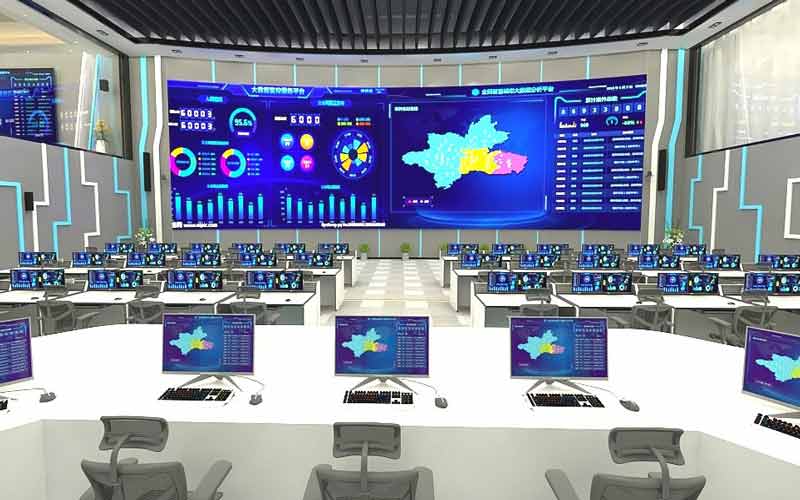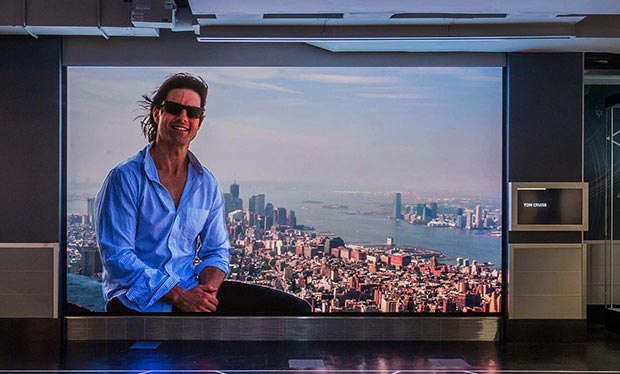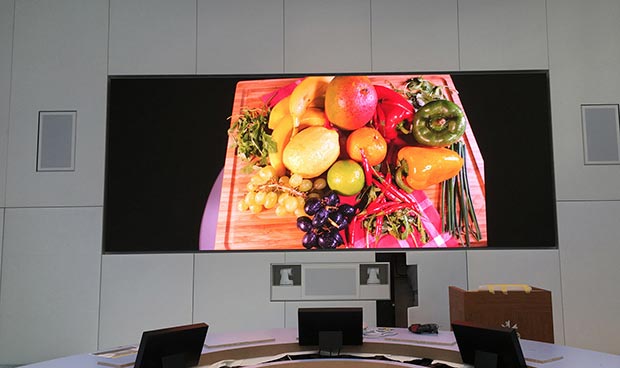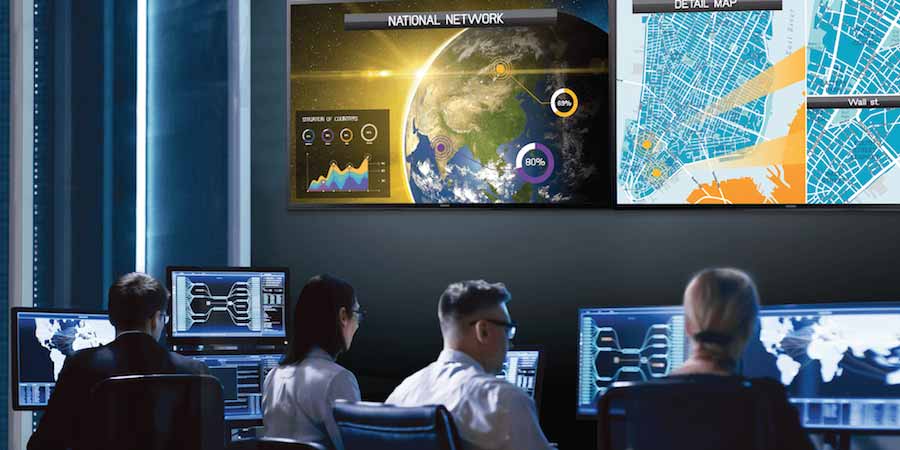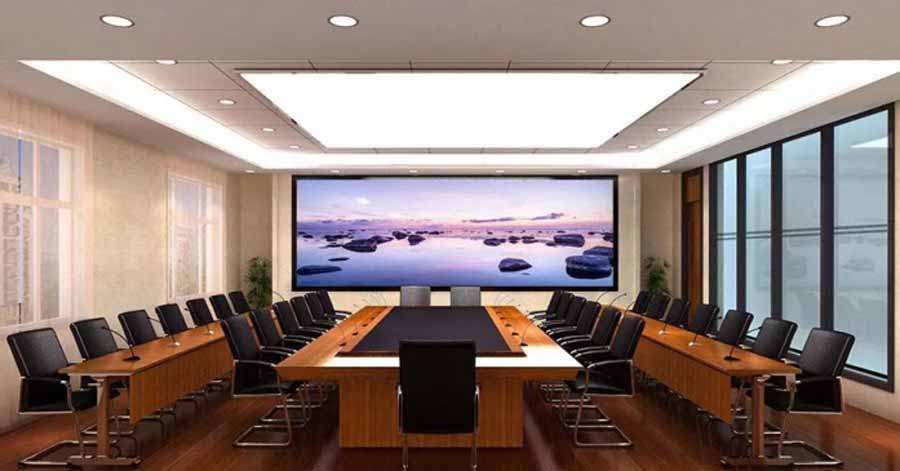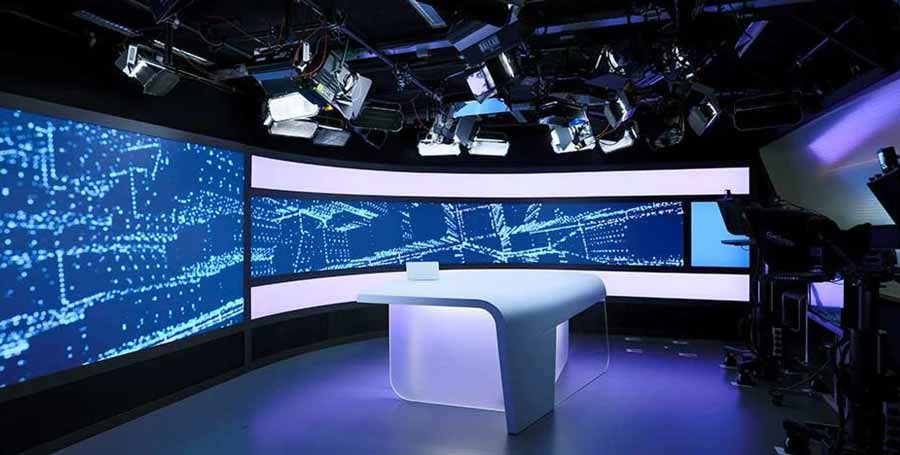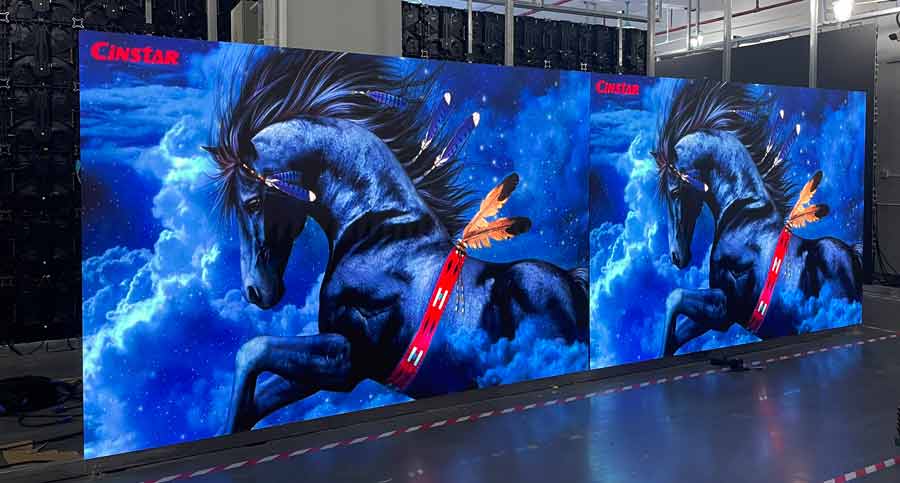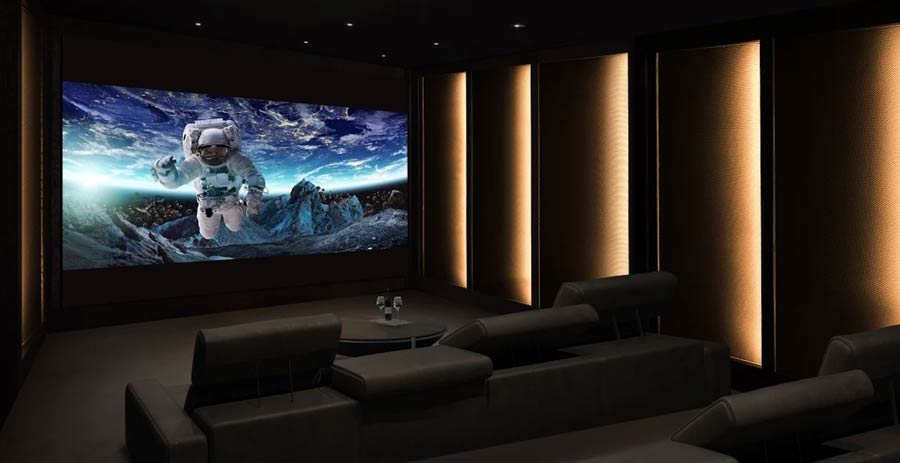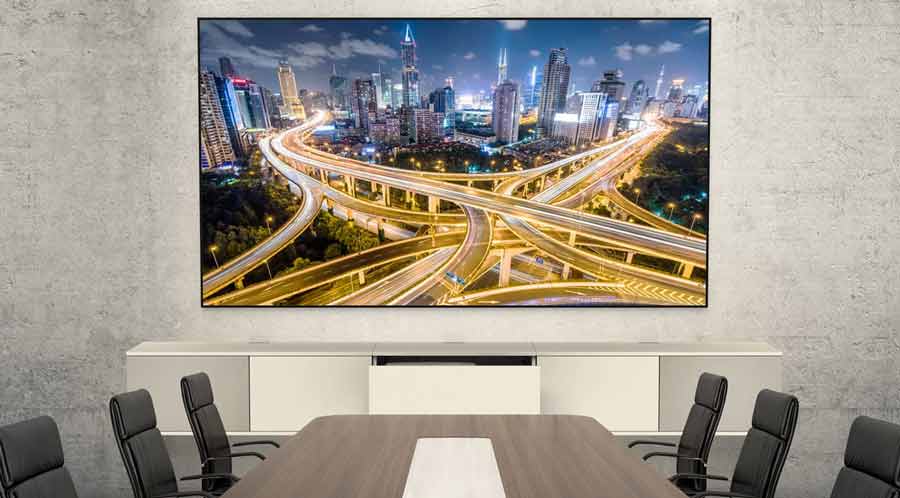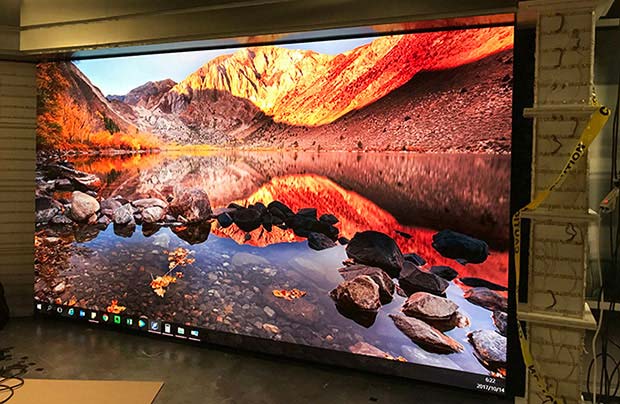Practical Guide For Direct View LED Video Wall
With the remarkable advancements in encapsulation technology for small-size LEDs, it is now possible to achieve a flawless display of 2K, 4K, and even 8K resolution on direct view LED display video wall. This breakthrough has opened up new possibilities for high-end installations in various markets.
The direct view LED has become a crucial player in the LED display industry, gaining widespread recognition as the top media solution for delivering exceptional visual performance in traditional market segments such as monitor rooms, control rooms, board rooms, and TV studios. These segments were previously dominated by LCD video walls.
The market share of DVLED panels in these segments is experiencing rapid growth, thanks to its exceptional features: seamless connection, high refresh rate, impressive contrast ratio, and outstanding image presentations.
In the upcoming sections, we will provide an overview of DVLED panels and share some relevant information that you may find interesting.
What is 1080P, 2K and 4K?
The DVLED screen has become the primary option for visual displaying systems, offering the ability to showcase high definition or ultra-high definition content. To understand the resolution, it is important to get to grips yourself with terms like 1080P, 2K, and 4K.
1080P, also referred to as Full HD or FHD, is a term widely employed to describe a high-definition video resolution. The resolution is 1920x1080 pixels, allowing for a higher level of detail compared to 720P. Such a resolution is often seen on a widescreen with an aspect ratio of 16:9.
2K resolution often proves necessary for displaying content on DVLED display. The resolution is 2048x1080. Although the number of pixels is the same vertically and very close at horizontally, 1080P and 2K are typically considered as two different resolution formats.
4k, also referred to as ultra-high definition (UHD), is a term used primarily in television and consumer media to describe a DVLED display resolution of 3840x2160, which has become the industry norm for 4K. At present, 4K TV have gained significant market share, just like the direct view LED display wall. Everyone wants a LED screen that can display video content with greater detail and clarity.
When searching for a high-quality DVLED display, it is crucial to decide the right resolution. When it comes to 4K resolution, having a lower pixel pitch means that a smaller screen dimension is needed, and the cost of different pixel pitches can vary significantly. By comparing prices, you can determine which pixel pitch and dimension align with your budget. In addition, it is important to consider the viewing distance and the overall visual experience.
Applications of Direct View LED Video Wall
The direct view LED display video wall is an ideal choice for applications that require showcasing highly detailed image and video content on a compact display. These are the primary market segments for quality visual production.
Control Room & Monitor Room
The control room and monitor room, which once dominated by LCD video walls, have become crucial markets for DVLED panels. The LED display at these locations is designed to maximize the amount of content it can show, based on its function attributes.
When it comes to video walls, direct view LED offers a range of advantages over LCD video wall. With higher brightness, better color uniformity, seamless connection, lower failure rate, easier maintenance, and enhanced visual experience, direct view LED display wall is the preferred option for those pursuing optimal performance. It's no surprise that the LED video wall is gaining popularity and taking over the market share that was once dominated by LCD video walls.
Conference Room, Meeting room & Board Room
Projectors have become an essential tool in the corporate world, dominating the market in conference rooms, meeting rooms, and boardrooms. They are the go-to visual display device for presentations. However, the introduction of it opens up a variety of new options and possibilities for the market.
When it comes to comparing DVLED wall and projectors, it's clear that projectors fall short in terms of brightness, image production, and overall visual experience. However, the experience is quite different. It doesn't require a dark environment, and its clear direct view display ensures enhanced engagement for the participants. In addition, it is compatible with various installation methods and offers a convenient plug-and-play feature.
The market for direct view LED display wall is experiencing significant growth due to rapid technological advancements and a sustained decrease in production costs.
TV Studio & Corporate Showroom
The TV studio and corporate showroom are the vital applications of DVLED. This is due to its rigorous requirements for video equipment, where DVLED outshines other options such as LCD video walls.
When applied for broadcasting purposes, the direct view LED boasts an impressive high refresh rate of up to 3840Hz, which ensures a flicker-free experience when it is facing a camera. Featuring high contrast ratio of 6000:1, impressive 16-bit gray scale, and wide color gamut, it can easily deliver stunningly vivid, clear, and detailed image reproduction. The LCD video wall simply cannot match the seamless connection, excelling color uniformity, and outstanding visual experience.
In addition, the DVLED wall is typically used for product launches, corporate showrooms, home cinemas, and premium advertising campaigns.
Advantages of Cinstar Direct View LED Display Wall
Are you aware of the key features and advantages that direct view LED display video wall can bring to your business? This cutting-edge LED display technology is at the forefront of the AV industry. Now, let's explore the advantages of it.
Cutting-edge 4K HDR Technology
HDR, short for High Dynamic Range, is a highly desired feature in TVs and also available in direct view LED. A display equipped with HDR technology enhances the video content, providing a more detailed and vibrant visualization. All because HDR technology provides a wider color gamut and greater accuracy, resulting in a higher contrast ratio. In order to achieve this remarkable visual experience, the DVLED screen simply requires particular controller and receiving cards.
Clean & Easy Set-up
Cinstar DVLED simplifies cabling work and reduces the failure rate by adopting the invisible jumper cable connection. Every column of the screen requires just a single power cable and data cable. It allows for quick and easy installation, resulting in a neat and clean screen appearance.
Front Installation & Maintenance
Wall mounting is preferred to install DVLED screen, giving the screen a sleek and stylish appearance. The Cinstar direct view LED offers convenient front installation, allowing you to save space by installing it directly against the wall. When it comes to maintenance, all the module, receiver card, and power supply of Cinstar DVLED panels can be easily accessed from the front. When a failure occurs, it's important to fix it quickly.
Optional Dual Backup Design
Stability is of utmost importance when it comes to DVLED wall products. It takes priority over any function, capability, or visual performance. There is no perfect product, so as the direct view LED. However, finding ways to improve its stability and reduce the failure rate can help avoid many potential problems.
The direct view LED TV offers superior stability compared to other visual devices. However, are there any solutions that can effectively tackle the challenges posed by signal/power failure? Yes, the answer is positive.
Cinstar LED video wall is designed to provide reliable performance, with a dual back-up system that ensures uninterrupted operation in the situation of receiver card or power supply failure. It is crucial to have this option available when the display is used during significant occasions or events.
How to Install Direct View LED Wall?
Wall mounting and ground stacking are the most common installations for direct view LED wall. However, it differs depending on the specific projects. Wall-mounting is the preferred method for installing most DVLED panels. Here are the procedures for wall-mounting:
Frame Installation
Cinstar direct view LED display video wall features incredibly lightweight and slim panel, eliminating the need for complex framing to support the entire screen. When perform the installation, the frame need to be installed at the first stage.
LED Panel Installation
The LED modules are taken away from the panels when we perform the packing in factory, to avoid any damage on the LEDs during shipping. After installing the structure frame, the panels (without modules) should be installed accordingly. Then it comes to the cabling work.
LED Module Attachment
Once the cabling is complete, simply reattach the modules. Then you can easily set up the DVLED display and configurate it to work. We can provide remote technical support, if you get the problem to get the screen working.
Ground support or floor stacking is another common approach for installing direct view LED wall. Furthermore, it is able to be combined with a particular support frame to function as an LED TV for an immersive home cinema experience or similar purposes. Here are a few key points to consider when installing it with floor stacking.
Evenness of the Ground
Installing the direct view LED display video wall directly on the ground is not recommended. The frame must be perfectly level for proper installation. Otherwise, there may be noticeable gaps. Installing the direct view LED wall requires quite a bit of attention and patience. To achieve optimal visual performance, it is important to carefully align all the panels and eliminate any gaps.
Great Caution Required
Our direct view LED TV screen uses magnetic modules and is equipped with vacuum service tool for maintenance purposes. However, the great caution is necessary when working with the module to prevent any potential damage to the LEDs and PCB board. When it comes to maintenance work, a high level of professionalism and expertise is required to repair broken LEDs. To avoid further damages, when the pixel pitch goes lower than P1.2, we suggest that you will express the modules to our local partners for repairing.
FAQs of Direct View LED Display
What is a Direct View LED Video Wall?
Direct view LED, often referred to as fine pitch LED or narrow pixel pitch LED, is a cutting-edge technology used in
direct view LED video wall and direct view LED display wall. This technology offers exceptional image quality, even at close viewing distances, with pixel pitches typically under 2.5mm. The trend is shifting towards smaller pixel pitches, such as 1.56mm and 1.2mm, with even smaller options like 0.9mm already available.
The current direct view LED display primarily uses SMD technology, which combines red, green, and blue LEDs for better brightness and color accuracy. However, the future of direct view LED looks even more promising, as companies invest in Mini LED and Micro LED technologies. These innovations aim to push pixel pitches below 0.7mm, further enhancing resolution and creating more immersive viewing experiences.
With its superior brightness, vibrant colors, and flexibility, the LED technology is becoming increasingly popular for both commercial direct view LED video wall and home entertainment setups. As the LED display industry continues to evolve, it remains a top choice for those seeking high-quality, large-scale displays for various applications.
How is Direct View LED Different from Traditional Displays?
Direct view LED technology offers significant advantages over traditional displays like LCD or plasma screens. Unlike these older technologies, direct view LED display uses individual LEDs to create images, providing superior brightness, contrast, and color accuracy. This technology eliminates the need for a backlight, allowing for deeper blacks and more vibrant visuals.
One of the most notable applications is in direct view LED video wall, which can be scaled to virtually any size or shape. These video walls deliver seamless, high-resolution visuals ideal for large venues, digital signage, and high-impact advertising. In contrast, traditional displays often suffer from limitations in size and image quality.
Additionally, direct view LED display is more energy-efficient and offer better durability, making it an excellent long-term investment for businesses looking for cutting-edge display solutions.
Can Direct View LED TV Be Used for Home Entertainment?
Direct view LED TV is revolutionizing home entertainment by offering superior image quality, vibrant colors, and deep contrasts. While traditionally used in large-scale commercial applications like direct view LED video wall, this cutting-edge technology is now making its way into homes, providing a premium viewing experience for those who want the best in entertainment.
Unlike conventional LCD or OLED TVs, DVLED panels use individual LEDs to produce light and color, eliminating the need for a backlight. This results in more vivid and accurate visuals with better black levels and higher brightness, even in well-lit rooms. For homeowners looking for a truly immersive experience, a direct view LED display wall could also be considered for larger home theaters or media rooms, where size and impact are key factors.
With its sleek design, energy efficiency, and advanced features, direct view LED TV is an excellent choice for those who want cutting-edge technology in their home entertainment systems, offering both style and performance that is hard to match with traditional displays.

